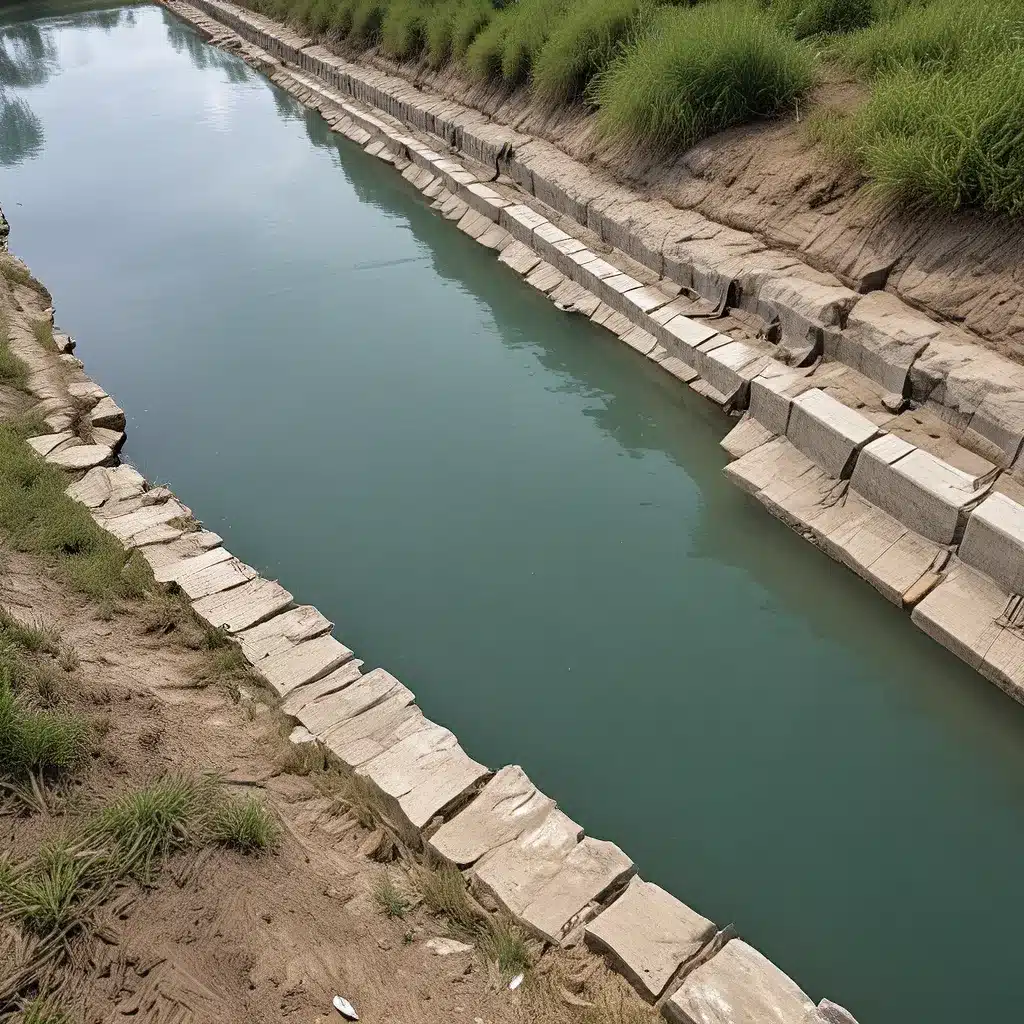
It’s a sunny afternoon, and I’m standing knee-deep in a murky pond, surveying the scene with a mix of fascination and concern. The water’s surface is blanketed with a thick, vibrant green carpet – a telltale sign of an aquatic plant emergency. Nearby, a fish gulps for air, its scales dull and lifeless. This is the ebb and flow of aquatic crises – a delicate dance between nature’s balance and the unpredictable forces that can disrupt it.
As an environmental specialist, I’ve seen my fair share of these aquatic emergencies. From harmful algal blooms to sewage spills, the challenges facing our water systems are both complex and ever-evolving. But amidst the chaos, there’s a silver lining: the incredible advancements in water treatment technology that are helping us navigate these treacherous waters.
Tackling Harmful Algal Blooms
One of the most pressing aquatic emergencies we face is the rise of harmful algal blooms (HABs). These prolific outbreaks of cyanobacteria can produce toxins that threaten the health of both humans and wildlife. In recent years, we’ve seen a concerning uptick in these blooms, driven by a perfect storm of factors – from nutrient pollution to climate change.
As outlined in a recent report, the impacts of HABs can be far-reaching, from contaminated drinking water to the closure of recreational areas. But the water treatment industry is fighting back with innovative solutions.
One such innovation is the use of ultrasonic technology to disrupt the cellular structure of cyanobacteria. By bombarding the cells with high-frequency sound waves, we can effectively break them down without the need for harsh chemicals. This not only removes the toxins from the water but also prevents the bloom from spreading further.
Another promising approach is the deployment of floating treatment wetlands. These engineered ecosystems leverage the natural filtration capabilities of aquatic plants to remove excess nutrients and other pollutants from the water. As the plants grow, their roots create a dense matrix that traps sediment and absorbs contaminants, helping to restore the balance of the aquatic environment.
Responding to Sewage Spills
Sewage spills are another all-too-common aquatic emergency, with the potential to wreak havoc on both public health and the environment. As outlined in Florida’s statutes, proper treatment and disinfection are crucial to mitigating the risks posed by these incidents.
In the past, the go-to solution for sewage spills was the deployment of temporary chlorination systems. While effective at killing harmful bacteria, this approach had its drawbacks – namely, the potential for toxic byproducts and the need for constant monitoring and maintenance.
But now, we’re seeing the rise of advanced oxidation technologies, which use a combination of ozone, UV light, and hydrogen peroxide to break down organic compounds and eliminate pathogens. These systems can be rapidly deployed in response to a spill, providing a more efficient and environmentally friendly solution.
Moreover, mobile water treatment units are becoming increasingly common, allowing us to quickly establish on-site purification capabilities and minimize the impact on nearby waterways. These self-contained systems can remove everything from suspended solids to heavy metals, ensuring that the affected water is safe for release back into the environment.
Preparing for the Unpredictable
As we’ve seen, the world of aquatic emergencies is fraught with uncertainty. Storms, droughts, and other natural disasters can all wreak havoc on our water infrastructure, leading to a cascade of problems.
The U.S. Army Corps of Engineers’ guidance on water resources engineering emphasizes the importance of proactive planning and resilience. By anticipating potential threats and investing in robust, adaptable water treatment systems, we can be better prepared to weather any storm.
One innovative approach is the use of modular treatment systems, which can be quickly assembled and deployed as needed. These plug-and-play units can be configured to address a wide range of contaminants, from heavy metals to radioactive isotopes, ensuring that we’re ready to tackle whatever challenge Mother Nature throws our way.
Additionally, we’re seeing the rise of predictive analytics and early warning systems, which leverage real-time data and advanced algorithms to detect emerging threats before they spiral out of control. By monitoring water quality indicators and environmental conditions, we can identify potential issues and mobilize our response teams accordingly.
The Future of Water Treatment
As I step out of the pond, I can’t help but feel a renewed sense of optimism. The challenges we face may be daunting, but the ingenuity and dedication of the water treatment industry are truly inspiring.
From the cutting-edge technologies that are helping us tackle harmful algal blooms to the resilient systems that are preparing us for the unpredictable, the future of water treatment is bright. And with companies like Inland Waters Inc. leading the charge, I’m confident that we can navigate the ebb and flow of aquatic emergencies with confidence and innovation.
So, the next time you turn on your tap or dip your toes in a pristine lake, remember the unsung heroes working tirelessly to keep our water clean, safe, and flowing. Because when it comes to protecting our most precious resource, the future is ours to shape.


